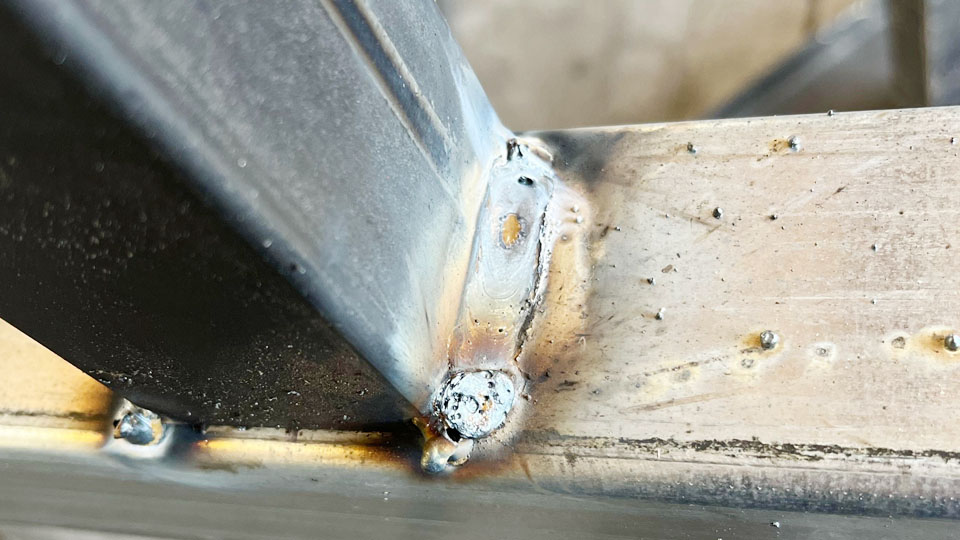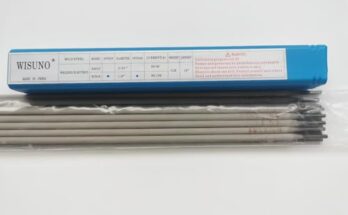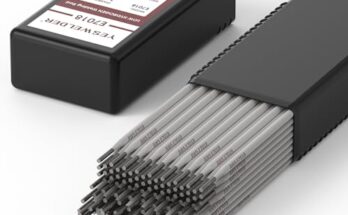Stick welding galvanized steel is something I’ve had my fair share of experience with, and I know it can be a bit tricky if you don’t approach it the right way.
If you’re working on a home project, repairing farm equipment, or tackling an industrial job, welding galvanized steel comes with its own set of challenges.

Image by reddit
The biggest concern is dealing with the zinc coating, which can cause issues like porosity, weak welds, and even health risks if you’re not careful. But with the right techniques, tools, and safety precautions, stick welding galvanized steel can be done efficiently and effectively.
Understanding the Galvanized Steel
Before getting into the welding process, it’s important to understand what galvanized steel is and why it’s different from regular steel.
Galvanized steel is simply steel that has been coated with a layer of zinc to protect it from rust and corrosion. This makes it an excellent material for outdoor structures, fencing, and industrial applications where exposure to moisture is a concern.
The problem when welding galvanized steel is that the zinc coating has a much lower melting point than steel. As soon as you start welding, the zinc burns off, releasing hazardous fumes and affecting the quality of the weld. This is why preparation and proper technique are so important when working with this material.
Challenges of Stick Welding Galvanized Steel
If you’ve ever tried welding galvanized steel without the right precautions, you probably noticed some immediate problems. The zinc coating can create excessive spatter, contamination in the weld, and even lead to porosity, which weakens the weld. One of the biggest risks, though, is the toxic fumes produced when the zinc vaporizes.
If you don’t have proper ventilation, you can experience something called “metal fume fever,” which feels like the flu and can make you really sick.
Another challenge is that the weld puddle can behave unpredictably because of the way zinc interacts with molten steel. It takes a little practice and patience to get smooth, strong welds without excessive porosity.
Best Electrodes for Stick Welding Galvanized Steel
Choosing the right electrode is one of the most important steps in successfully welding galvanized steel. Since the zinc coating can create welding defects, you need a rod that’s capable of burning through contaminants and producing a clean weld.
Some of the best choices for stick welding galvanized steel include:
6011 Rod – This is one of the best options because it has deep penetration and can handle impurities like zinc better than most rods. It also produces a strong, durable weld.
6010 Rod – Similar to 6011, but it requires a DC welder. It’s great for deep penetration and burning through coatings.
7018 Rod – This is a low-hydrogen electrode that produces strong, smooth welds. It’s a good choice if you’re working on structural applications, but it works best when the zinc coating is removed first.
6013 Rod – Works well for thinner materials and produces a smoother arc, but it’s not as effective at burning through zinc coatings.
The choice of electrode depends on your specific application. If you’re welding something structural or heavy-duty, the 7018 is a great choice. If you just need to get through the zinc without too much prep, the 6011 is your best bet.
Preparing Galvanized Steel for Stick Welding
Preparation is key when welding galvanized steel. If you try to weld directly onto a thick zinc coating, you’re going to have issues with porosity, weak welds, and dangerous fumes. Here’s what I do to prepare galvanized steel before welding:
Remove the Zinc Coating
If possible, grind off the zinc coating in the area where you’ll be welding. A flap disc or wire brush on an angle grinder works well for this. Removing the coating helps prevent porosity and reduces fume production.
Clean the Metal
After grinding, clean the area with a wire brush or a solvent to remove any remaining contaminants. This helps ensure a strong weld.
Use Proper Ventilation
Even if you remove the zinc coating, there will still be some fumes. Always work in a well-ventilated area or use a fume extractor. If you’re welding indoors, keep doors and windows open and use a fan to direct fumes away from you.
Wear Protective Gear
A good welding respirator is a must when working with galvanized steel. A standard welding helmet and gloves are essential, but don’t forget about respiratory protection. Zinc fumes are toxic, and prolonged exposure can be dangerous.
Best Welding Techniques for Galvanized Steel
Once the metal is prepped, the right welding technique makes all the difference. Here’s what I’ve found works best:
Use a Slight Weaving Motion – A slight weave helps distribute heat evenly and can help burn off any remaining zinc.
Maintain a Short Arc Length – Keeping your arc tight helps with penetration and reduces excessive spatter.
Use the Right Amperage – Too high of an amperage can cause excessive spatter, while too low can lead to weak welds. Adjust based on your electrode choice and metal thickness.
Weld in Sections – If you’re working on a long weld, don’t try to do it all in one go. Weld in short sections to control heat buildup and avoid warping.
Clean Between Passes – If you’re running multiple passes, wire brush or grind between them to remove slag and any contaminants.
Dealing with Zinc Fumes and Safety Precautions
Safety is one of the biggest concerns when welding galvanized steel. The fumes from burning zinc can cause metal fume fever, which is no joke. It can leave you feeling like you have the flu, with chills, nausea, and body aches. To avoid this, always:
- Work in a well-ventilated area
- Use a fume extractor if possible
- Wear a welding respirator
- Take frequent breaks and avoid breathing in the fumes
Drinking milk has been an old welder’s trick to help with zinc fume exposure, but the best prevention is proper ventilation and a respirator.
Strength and Durability of Stick Welds on Galvanized Steel
Stick welding produces strong welds on galvanized steel when done correctly. The key is ensuring good penetration and avoiding porosity. If you remove the zinc coating and use a deep-penetration electrode like 6011 or 7018, the welds will be just as strong as welding regular steel.
If the welds will be exposed to moisture or outdoor conditions, applying a protective coating or paint after welding can help prevent rust and extend the life of the weld.
When to Use Stick Welding for Galvanized Steel
Stick welding is a great choice for galvanized steel in many situations, but it’s not always the best option. It works best for:
- Structural welding projects
- Outdoor applications
- Thick materials that need deep penetration
- Repairing galvanized fences, gates, and metal structures
If you’re working with thinner galvanized steel or need a cleaner weld appearance, MIG welding might be a better option. But for rugged, strong welds, stick welding does the job well.
Conclusion
Stick welding galvanized steel isn’t as difficult as it seems, but it does require the right preparation and safety precautions. The biggest challenge is dealing with the zinc coating, which can create porosity and produce harmful fumes.
By choosing the right electrode, cleaning the metal, and using proper ventilation, you can achieve strong, reliable welds. If you’re new to welding galvanized steel, take your time, practice on scrap pieces, and always prioritize safety. With the right approach, you can tackle any project with confidence.
FAQs
What is the best welding rod for galvanized steel?
The 6011 rod is one of the best choices because it has deep penetration and can burn through the zinc coating effectively.
Can I weld galvanized steel without grinding off the zinc?
Yes, but it’s not ideal. If you don’t remove the zinc, you’ll get more fumes and a higher chance of porosity in your welds.
Is welding galvanized steel dangerous?
It can be if you don’t take proper precautions. The fumes from burning zinc are toxic, so always work in a well-ventilated area and use a respirator.
Why does my weld look rough when welding galvanized steel?
The zinc coating can cause excessive spatter and porosity. Removing the coating and using a proper technique can improve weld appearance.
Can I stick weld thin galvanized metal?
Stick welding isn’t the best option for thin metal, as it can easily burn through. MIG welding is usually a better choice for thinner materials.


